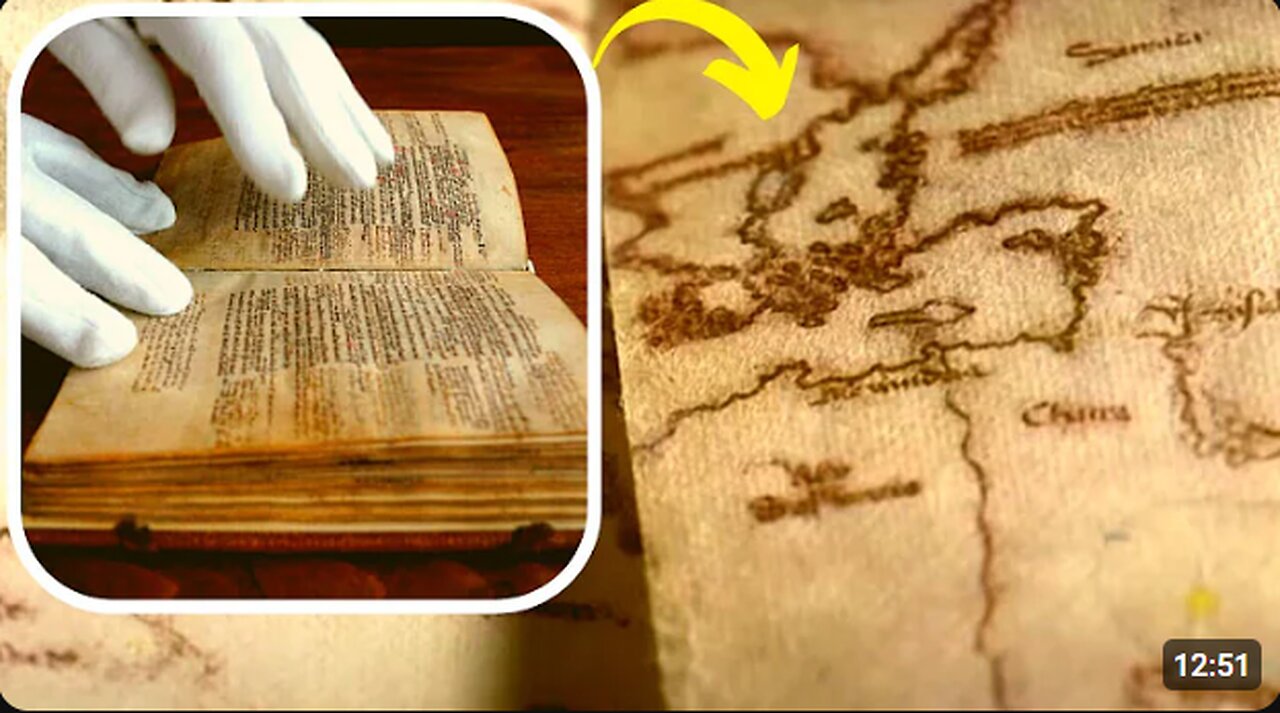Premium Only Content

The Mystery of the VINLAND Map
The central conspiracy surrounding the Vinland Map concerns its authenticity as a genuine medieval artifact. If proven authentic, the map would provide evidence of Norse exploration of North America around the year 1000 AD, significantly predating the voyages of Christopher Columbus. This notion challenges traditional Eurocentric narratives of discovery and colonization of the Americas, suggesting a more complex and interconnected history.
Arguments For Authenticity:
Provenance: The map's proponents point to its inclusion in the Yale publication and the credible provenance provided by Laurence Witten II and Paul A. Mellon, who claimed it was part of a European family collection for centuries.
Stylistic and Historical Context: Supporters argue that the map's depiction of Vinland aligns with descriptions in Norse sagas, which mention Leif Erikson's exploration and settlement attempts in North America.
Scientific Analyses: Early radiocarbon dating studies suggested a medieval date range for the parchment, bolstering claims of its authenticity.
Arguments Against Authenticity:
Ink and Parchment Analysis: Subsequent scientific analyses have raised doubts, particularly regarding the ink composition. The presence of anatase, a form of titanium dioxide, in the ink suggests a modern origin, as this material was not known to be used in medieval inks.
Historical Anomalies: Critics point to inconsistencies in the map's historical record and the lack of concrete evidence linking it to known medieval cartographic traditions.
Motives for Forgery: Some theorists argue that the map could have been forged in the 20th century to capitalize on public interest in Norse exploration and early American history.
2. Alleged Forgeries and Misrepresentation
A significant conspiracy theory suggests that the Vinland Map is not an authentic medieval artifact but a skillful forgery created to deceive scholars and historians. This theory posits various motivations behind the forgery, including financial gain, academic prestige, or nationalistic agendas aimed at promoting Norse exploration claims over other European powers.
-
 1:01:26
1:01:26
The Dan Bongino Show
4 hours agoTrump Is Cancelling DEI And Cancel Culture (Ep. 2424) - 02/17/2025
595K1.2K -
 1:06:12
1:06:12
Timcast
3 hours agoDemocrat Swamp IMPLODES, CBS Runs DAMAGE Control For Democrats, Gets ROASTED By Elon | Timcast LIVE
101K110 -
 2:00:58
2:00:58
RealAmericasVoice
10 hours agoWAR ROOM WITH STEVE BANNON AM EDITION
84K15 -
 2:59:47
2:59:47
Wendy Bell Radio
9 hours agoAmerica Drops The Gloves
87.4K53 -
 1:22:27
1:22:27
Steven Crowder
4 hours agoGeorge Washington, Our First President | 3 in 3 Special
264K156 -
 1:03:57
1:03:57
Kyle Fortch
4 hours ago $1.01 earnedDJ Chill: DJing For Jelly Roll, SOLD OUT Tour, Performing at Hometown Arena | THE ONE SHEET S1E4
39K3 -
![The Deep State Spied On Trump & Sabotaged 2020 Operation To Oust Maduro [EP 4440-8AM]](https://1a-1791.com/video/fwe1/94/s8/1/F/5/k/Z/F5kZx.0kob-small-The-Deep-State-Spied-On-Tru.jpg) 4:05:26
4:05:26
The Pete Santilli Show
15 hours agoThe Deep State Spied On Trump & Sabotaged 2020 Operation To Oust Maduro [EP 4440-8AM]
59.5K3 -
 41:53
41:53
Rethinking the Dollar
3 hours agoHype or Hope? Will THE 50-YEAR FORT KNOX GOLD SCANDAL BE EXPOSED?
27.3K10 -
 1:32:36
1:32:36
Game On!
17 hours ago $9.74 earnedPresident Trump TAKES OVER the Daytona 500!
72K15 -
 21:35
21:35
DeVory Darkins
3 days ago $26.40 earnedMitch McConnell TORCHED as Secretary of HHS is sworn in
147K197